I may be partial about my fondness of Alaska, but once you have stepped foot on those wild lands, tangled with fish in the waters, and played in the land of the midnight sun, you can’t shake it. The vast array of waters that you can fish are unscathed and untouched, meaning there is plenty of room for anglers to play.
Southeast Alaska
When people think about fly fishing in Alaska, their mind immediately travels to fishing amongst the bears in Katmai National Park in Bristol Bay or catching monster rainbow trout along the Kenai Peninsula. However, the hidden gem of Alaska, in my opinion, is Southeast Alaska.
Southeast Alaska is an area surrounded by oceans and glaciers, and the only way to make it to your destination is by taking a boat, or plane (and sometimes both). The Southern panhandle of Alaska is made up of beautiful landscapes that draw you in. From mountain lakes and streams to saltwater flats, and weaving your way through muskeg meadows, old-growth timber, and glacial valleys, the fishing in Southeast provides anglers with a “pick your own adventure” sort of experience.
Although I once called the capital of Alaska home, I now reside in Tucson, Arizona. I exchanged cold winters and wet summers in the Tongass National Forest for a dry heat, surrounded by the Saguaro National Forest. My agreement to move, came with a commitment to spending summers in Southeast Alaska, scratching that fishing itch, and fulfilling my ocean quota for the year.
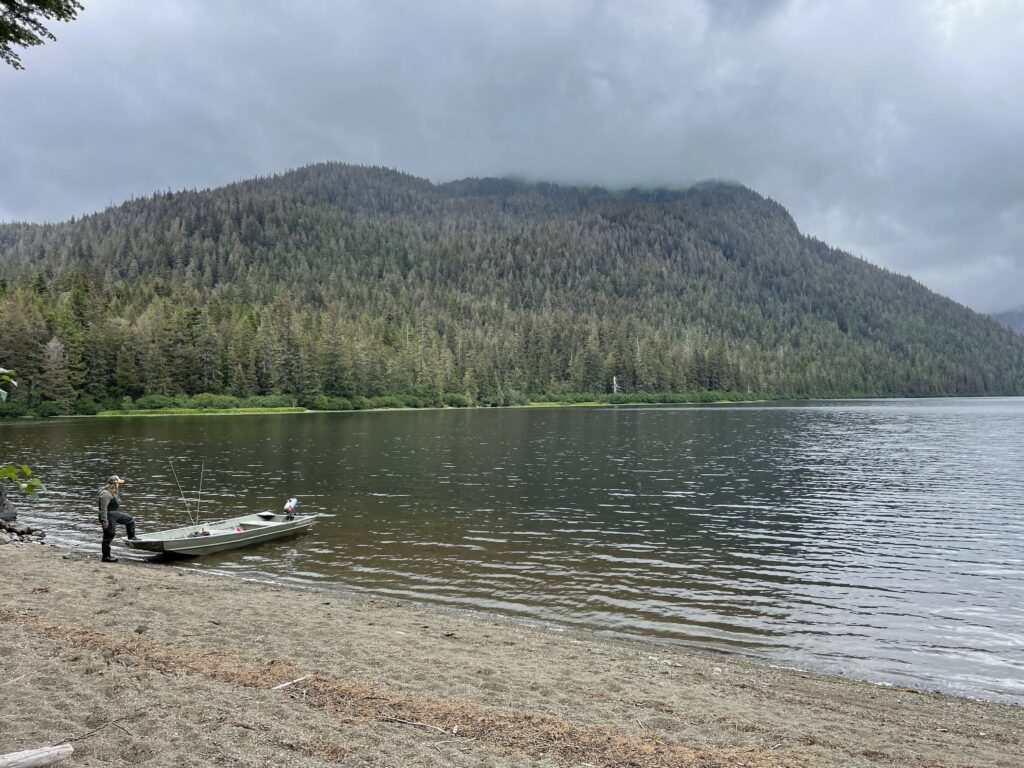
So, now the journey begins.
The first step is to pack our bags. Waders, check. Flies, check. Rain Jacket, check. For this adventure, I am leaving my 3-weight behind, and packing an arsenal of 5-8 weight rods. I am exchanging my 6x tippet and size 20 dries, used to chase Apache and Gila trout in the Arizona mountains, for 8-16 lb. maxima, and fast action rods, ready to cast big meaty flies through wind and rain. Finally, to appease my amazing hosts, my mom and dad, I am making sure to pack an extra bag of assorted fresh tamales, tortillas, and candies from the desert.
As I said, Southeast Alaska is surrounded by oceans and glaciers, so the only way to arrive is on a 737. From Tucson, we board a plane to Seattle, and from Seattle, it’s just a 2.5 hour flight to Juneau, Alaska’s capital city. It’s safe to assume that a day of travel is in store for someone flying to Alaska. But to watch your surroundings so drastically change from one boarded flight to the next, makes the travel day worth it. The thing I had forgotten about when flying into Alaska, is that even though our plane didn’t touch down into Juneau until 9:00 pm, the sun was still high in the sky, reminding me, that this truly is the land of the midnight sun.
Jim’s Lake
Remote fishing in Southeast Alaska can be some of the most fun, and adventurous fishing trips you find yourself in. The U.S. Forest Service has over 160 public use cabins across the Tongass National Forest in Southeast Alaska. Many of which are only accessible by chartering a float plane from a nearby city and commuting to these backwoods’ places.
This summer, my husband Jake and I decided on Jim’s Lake, located on the south central area of Admiralty Island, an island known for having the densest brown bear population in the world. I had visited Jim’s Lake once as a child, proved by a log entry written in 1999.
The Jim’s Lake cabin is a primitive, pre-cut cedar pan-abode style log cabin that sleeps up to six people on wooden bunkbeds. The cabin is equipped with a table, benches, a wood stove for heat, an outhouse some 100 yards from the cabin, and an aluminum john boat. These public use cabins do not have running water or electricity, meaning visitors are required to pack everything themselves. For me, this is the fun part. I started making my Excel spreadsheet packing list months ago, just to be sure I didn’t forget any critical item, because it’s not like there is a store I can pop over to when I realize I forgot to pack extra camp fuel.
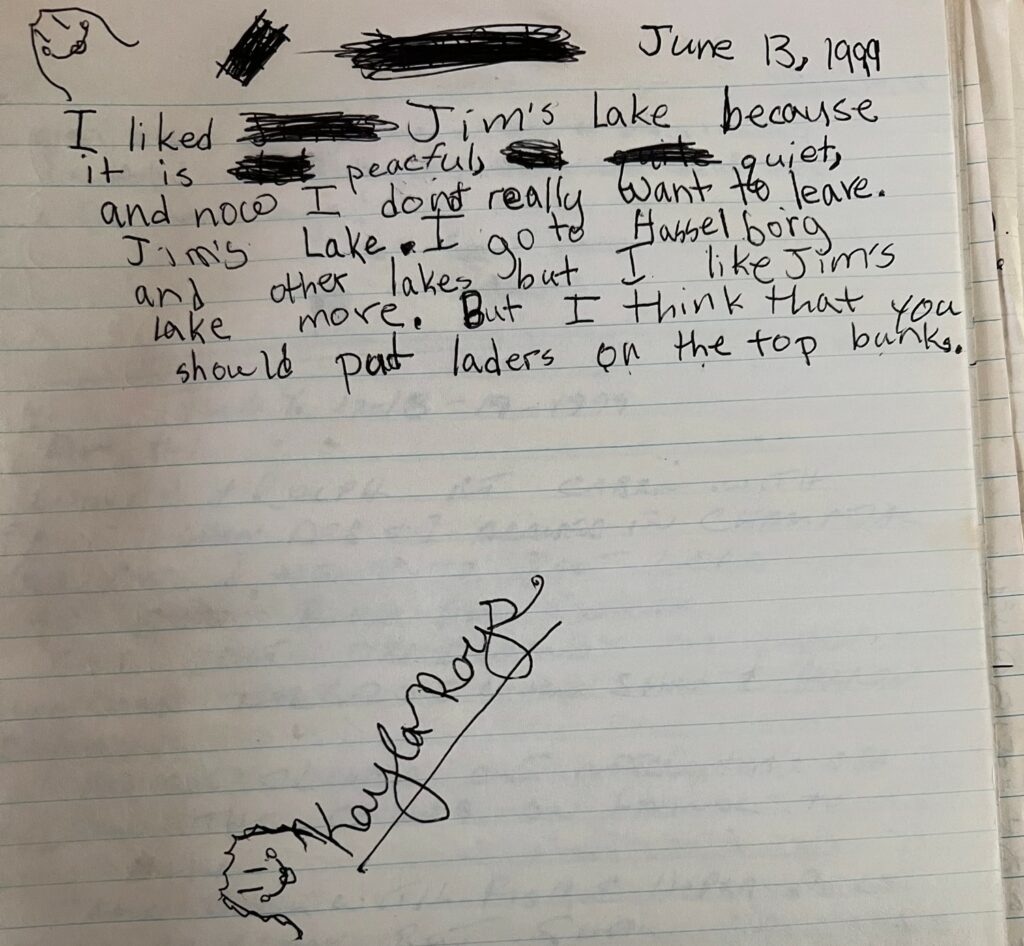
Day 1:
Report to Alaska Seaplanes at 8:00 am to weigh in our luggage, fill out Haz-mat paperwork for our 2hp outboard and fuel, and start the waiting game. Of course, for the majority of our trip leading up to this point, we had blue skies and sunny weather. But yesterday it took a turn. With low cloud coverage and low visibility, it will be a touch and go to see if we make it out on our trip today. The two of us spent the day wandering the Juneau International Airport (all two wings of it), munching on vending machine snacks, and waiting for our names to be called and be loaded on our chartered flight. Unfortunately for us, after loading the aircraft, some 9 hours after our first check in time, getting so close as to taxing the float plane across the float pond, the airport closed due to weather, and we were grounded for the night.
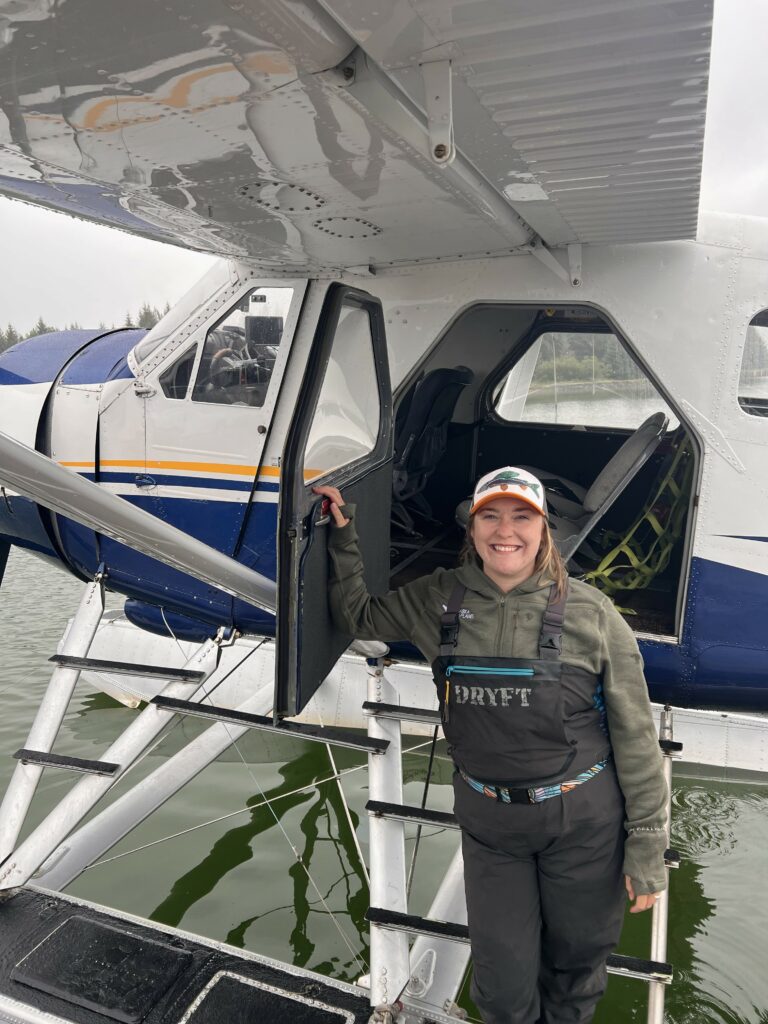
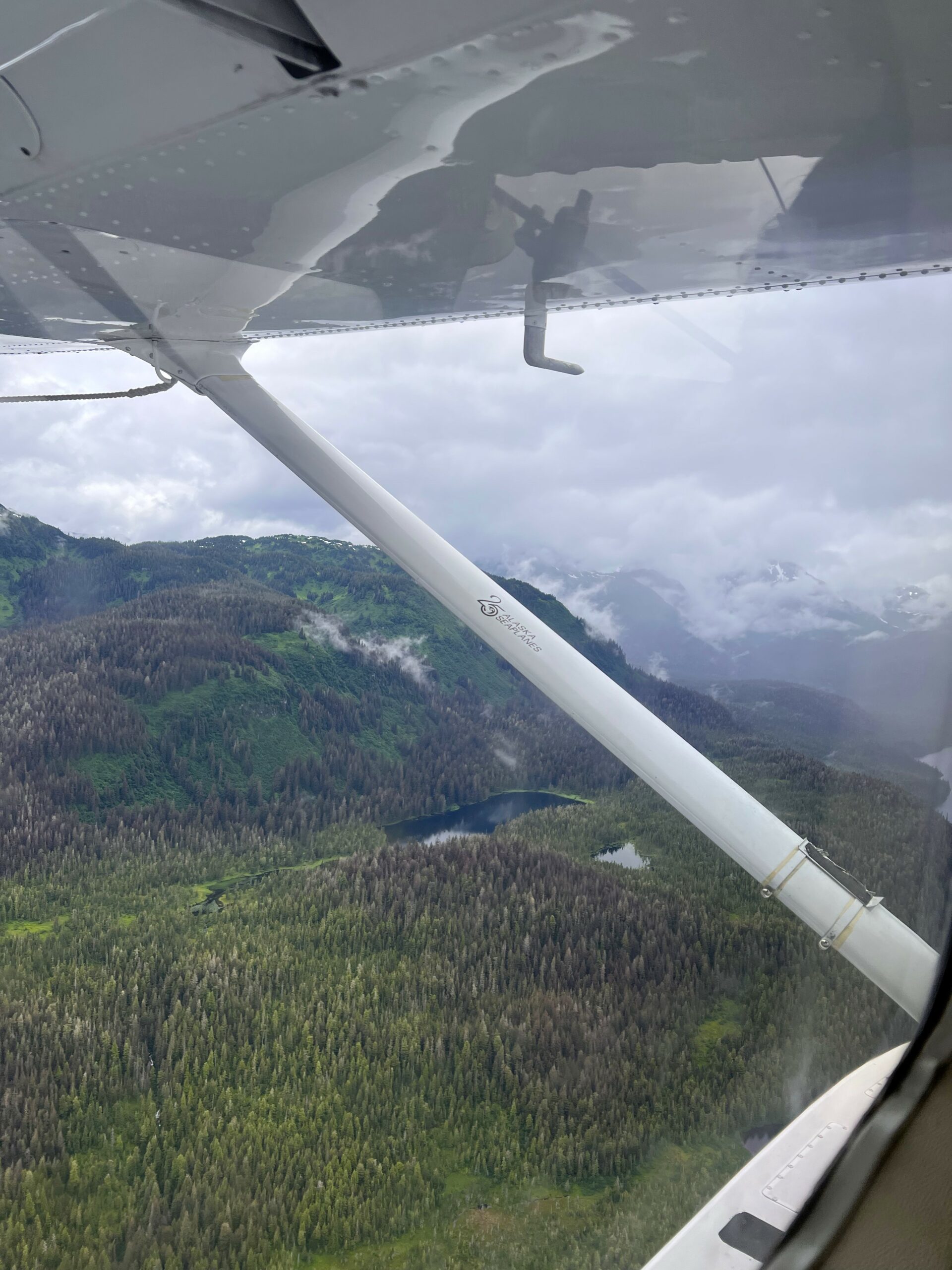

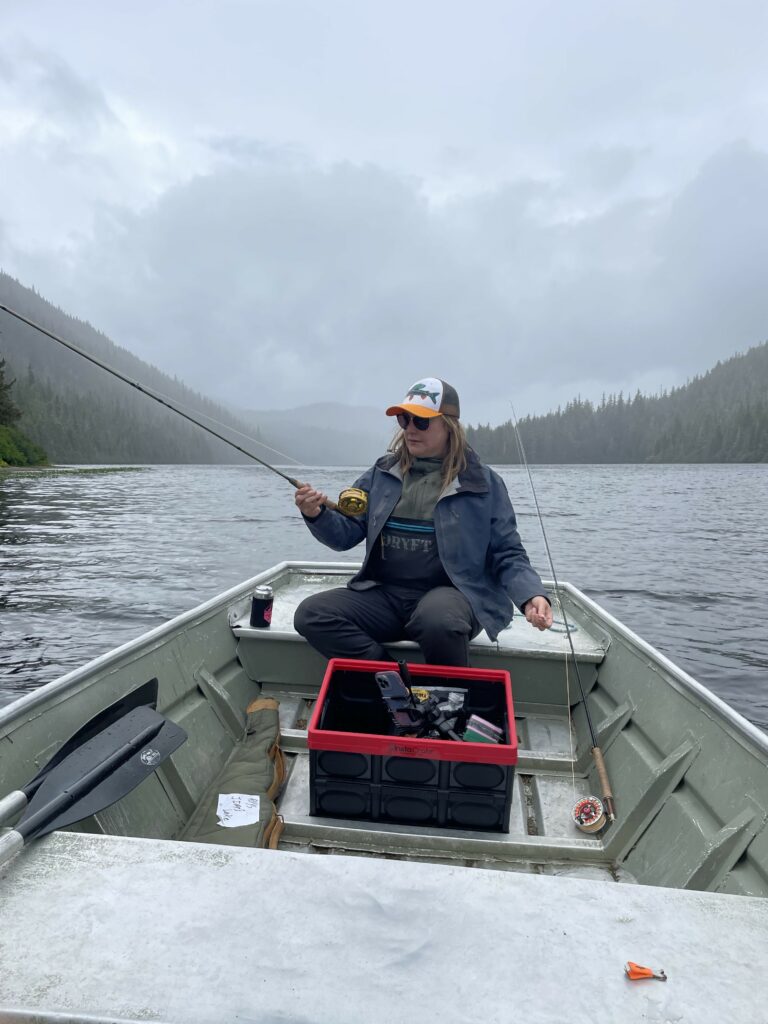
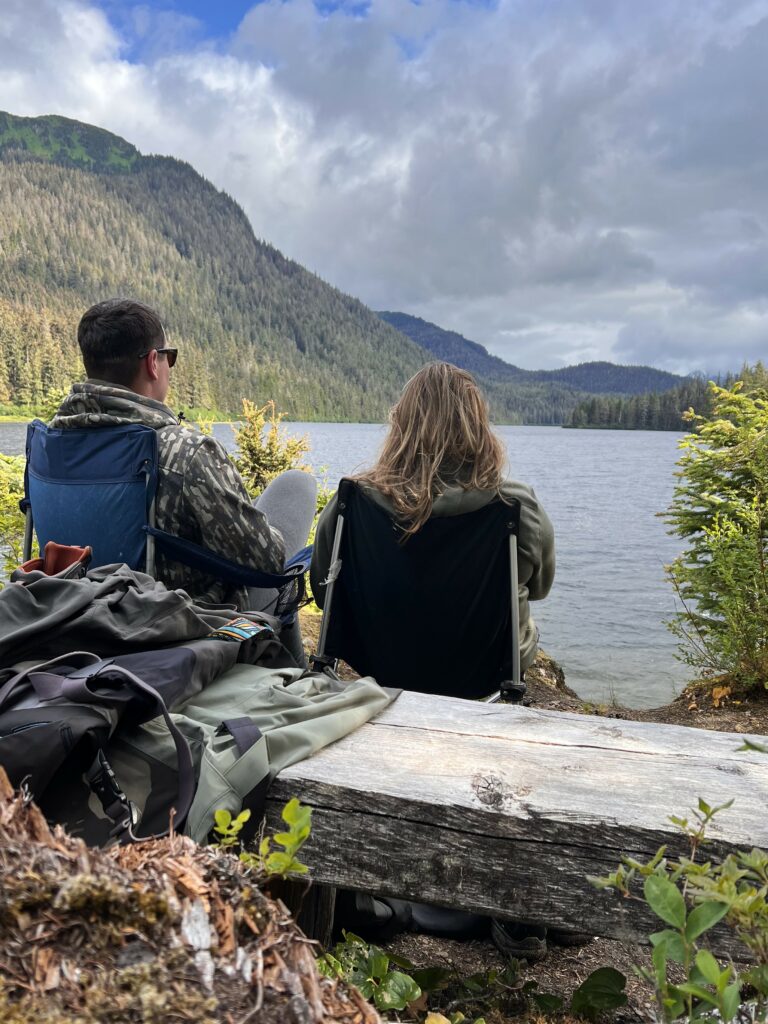

Day 2:
With anxiety and excitement levels high, the two of us barely slept. Like kids on Christmas morning, we couldn’t wait to try and get out to Jim’s Lake today. This time, we successfully board the Dehavilland Beaver, and were officially on our way. The weather wasn’t anything to worry about really, but we did have to take the long way around Admiralty Island. We flew along Chatham Straight towards Angoon, slipping through a couple mountain passes, before we finally spotted our cabin sitting high on the bluff, sun shining above it. Waving goodbye to our pilot, Topher, from the shore, we cracked a couple of cold beers and rejoiced our journey here. We quickly hauled our gear to top of the bluff from the beach, strung up our rods, threw the outboard on the john boat, and hit the lake.
The target species for the trip is the Cutthroat Trout, Oncorhynchus clarkia. The cutthroat trout is one of my favorite fish to catch, with the diversity of spots, slit under their throat, and overall bodily coloring, they are all unique and eager fish to catch on the fly.
Throwing little foam poppers to Lily-pads brought fish to hand. Nothing of true size, but a great start to the trip, nonetheless. Suddenly, we heard an eerie and mysterious crying, like a small child, coming from the woods. As goosebumps rushed my body, I was reminded of the Tlingit tales I heard of the as a child. It is said the Kóoshdaa Káa, a shapeshifter with the ability to take the form of man or otter, imitates the cries of a baby to lure victims into the wilderness, sometimes tricking them to their deaths. Regardless of what made the crying sound, I did not dare to utter the name, and we headed back to camp as quick as our 2hp motor could take us.
We returned to the cabin, pushing the cries we had heard to the back of our minds, warmed the briquets in the fire pit, prepped our steaks, cracked our Barnaby Brewing beers. We sat on the bluff overlooking the lake, admiring the quiet silence of the wind through the trees, rain sprinkles on the water, and birds chirping in the forest.

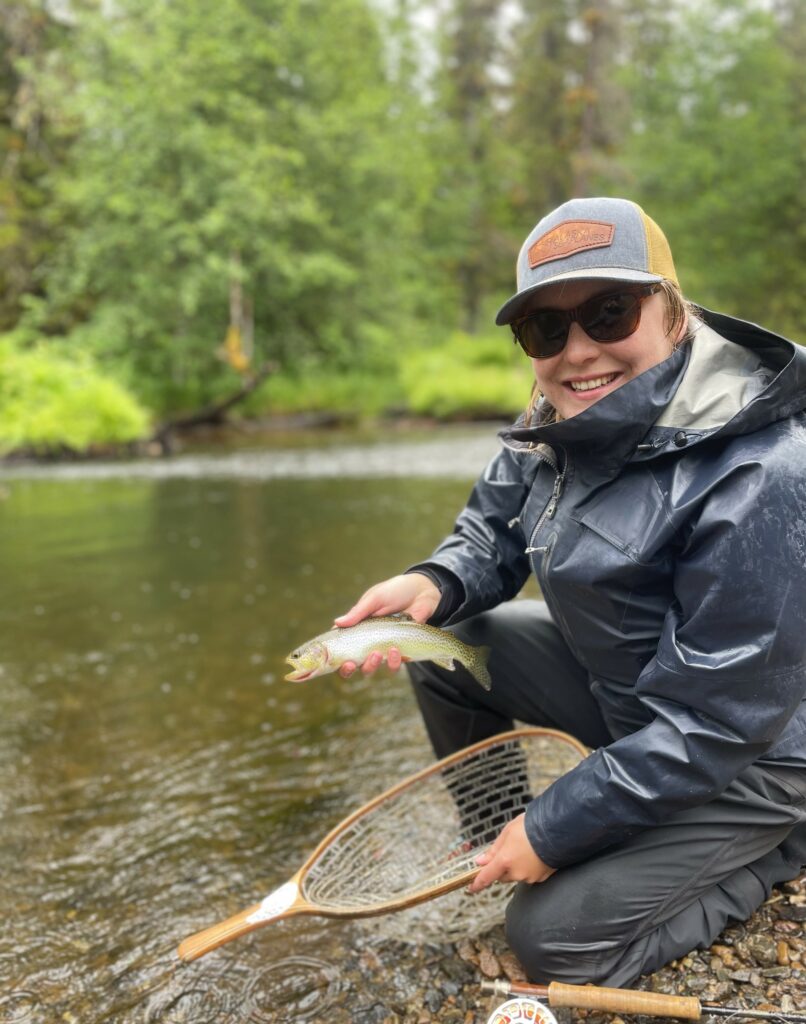

Day 3:
Awoken by what felt like an earthquake, the two of us realized that the cabin was jolting in the gusts of wind blowing in from the end of the lake. Now realizing that the cables attached to the outside of the cabin were there for a reason, we cozied deep into our sleeping bags, wishing the wind, and pounding rain, would let up so we could get out fishing. The Jim’s Lake cabin, although beautiful when the weather is on your side, sits among a canyon, and when the wind decides it’s going to blow, it really blows. Snooping out the cabin windows, we watched as sheets of rain and wind crossed the lake, creating white caps on the two mile long body of water, and forming swirls of spruce and hemlock needles that danced in air around us.
Around noon, we couldn’t take the cabin any longer, so we geared up in warm layers and GoreTex, and began hiking down Jim’s Creek, figuring that the old growth forest surrounding us would give us the best shot at protection from the weather outside.
The creek is known to have great mouse fly pattern and dry fly fishing. Unfortunately, with so much rain and wind disrupting the surface of the water, it proved difficult for us. Before we soaked through our GoreTex jackets and decided to make the journey back to the cabin, we were able to convince a few cutthroats that our mouse patterns were the real deal, and our subsurface fry patterns were tasty little treats.
In the evening, as the wind calmed down, we decided to take the john boat out to explore the lake. After a thirty minute journey getting pelted by rain on our ride to the other end of the lake, we anchored in a cove of lily-pads at the inflow of the lake and began casting small streamers into the dark depths of tannic water. Cast after cast the two of us caught fish after fish. The fresh air still had a bite to it, as the breeze rushed through the old-growth timber surrounding the lake, but that didn’t bother us as we assisted one another in netting fish, cracking beers, and enjoying this magical place.
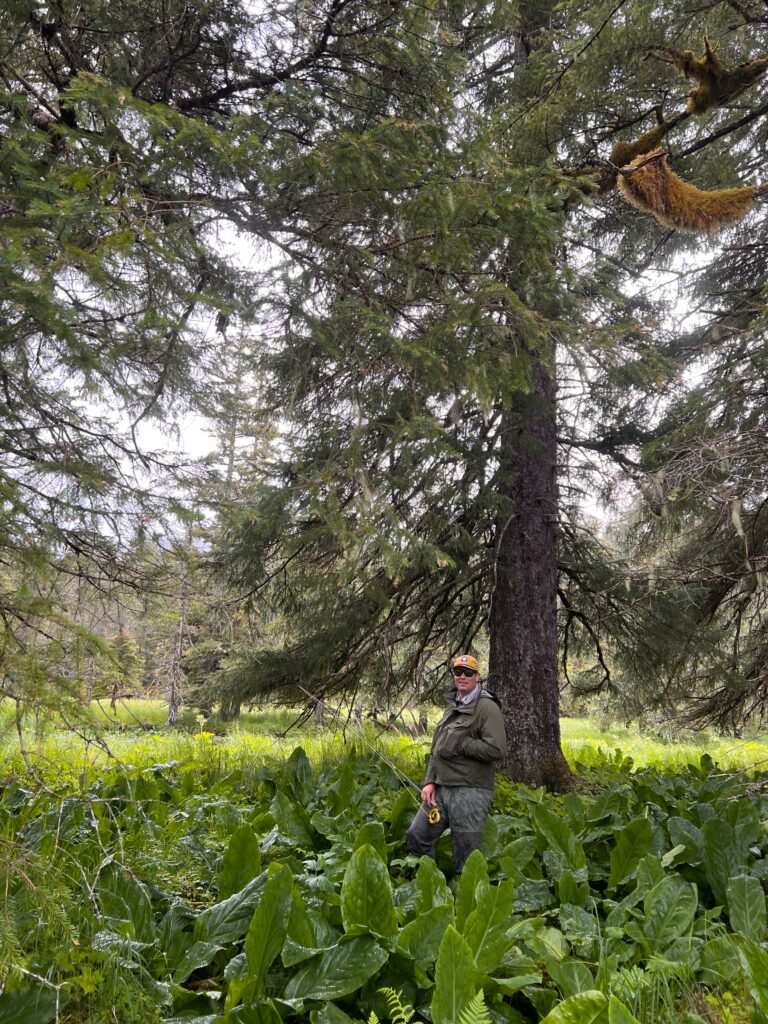



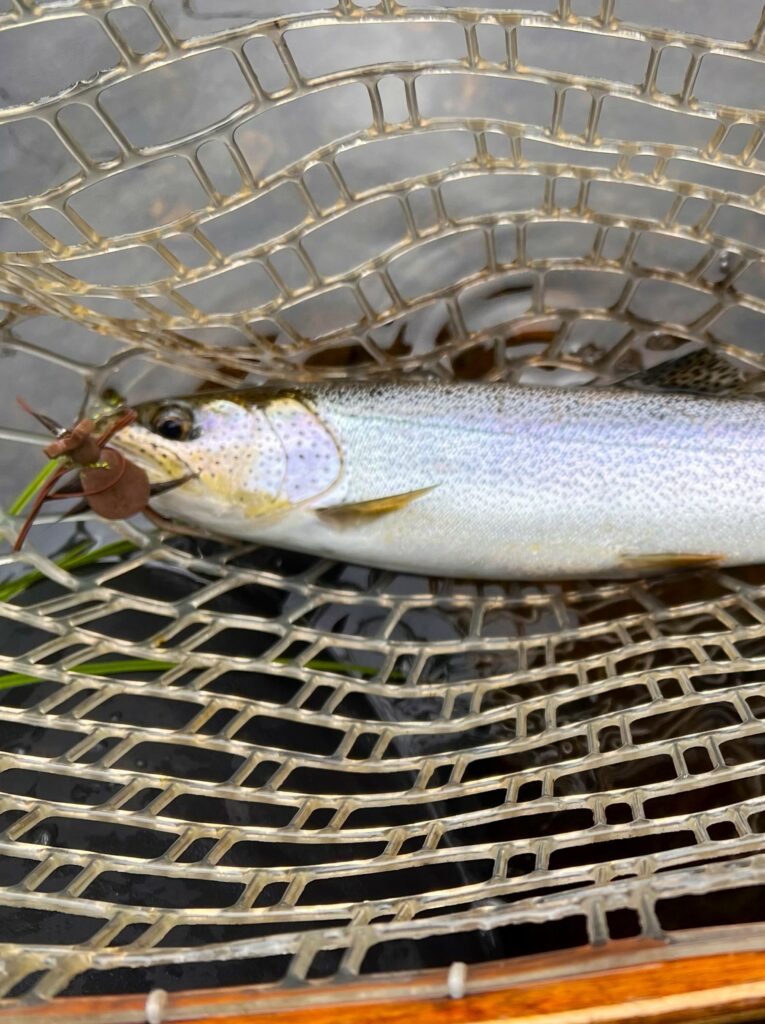
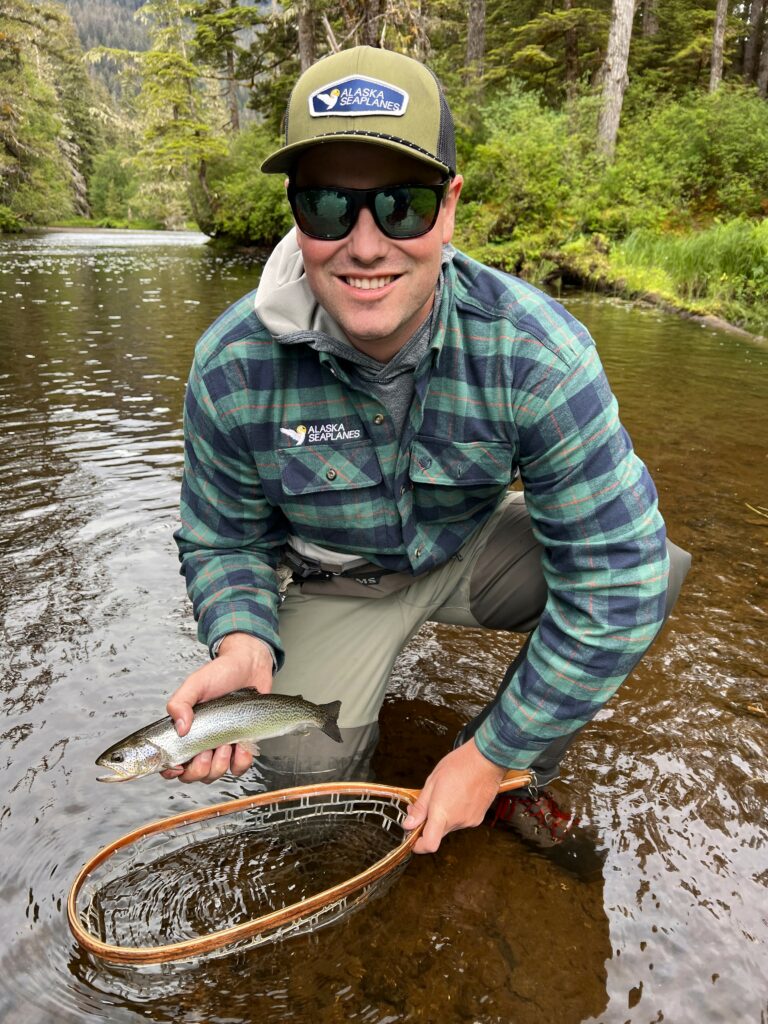
Day 4:
Today, we have a full day to explore, and the weather was holding, so we woke up chomping at the bit. First, we cruise to the opposite side of the lake, where on one side is the inflow creek, and the other, a cascading waterfall. We opt to hike up the inflow of the creek and explore the area beyond. Surrounded by massive old-growth Sitka Spruce and Western Hemlock, with Skunk Cabbage that grows chest high, and tall grass surrounding everywhere we looked, it was like we have emerged into another world. We follow a deer trail up the creek, and cast dries to the slow moving, tannic water. But we are quickly deterred from fishing by the buzzing of mosquitos. Onto the next.
Within Jim’s Lake, there is a mysterious little island, nicknamed Loon Island. It’s about a 20×20 ft rocky island that cascades down into the lake’s depths. On the island stands lone hemlock and it is rumored this is where a family of loons used to call home. We made our way to the island to cast our flies from the edges of the rocky sides and see if we could find a monster lake dwelling cutthroat. No monsters this trip, but a few dubbed “cutie cutties.”
We stop by the cabin for lunch, and restock our bags with frosty beverages and flies, and head down river to hit the honey holes with mouse patterns and dries now that the wind has subsided. We have luck, laughing and cheering each other on as we watch cutthroat trout bound and blast out of the water, chasing flies practically as large as themselves.
We stayed out late, taking full advantage of Alaska’s long summer daylight hours. We built a big fire, and casted flies off the bluff below the cabin. At around 11pm, as we were beginning to wind down, we hear a slapping on the lake, traveling across from one end to the next. Mr. Beaver must have felt the need to say hello before our last day.

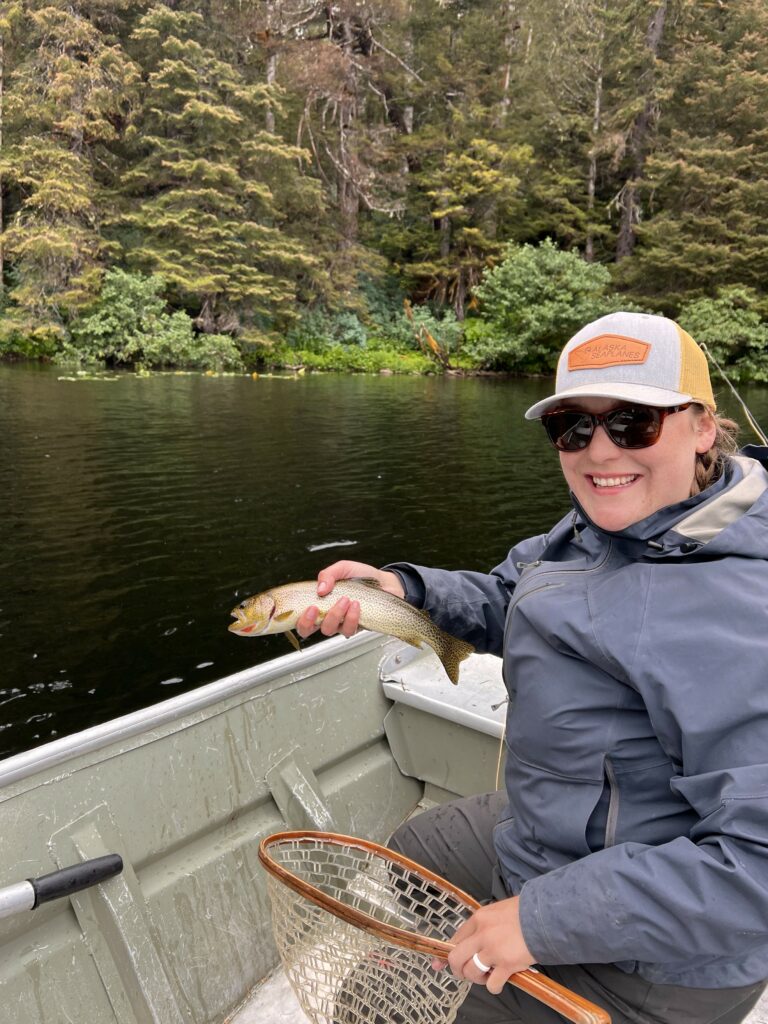
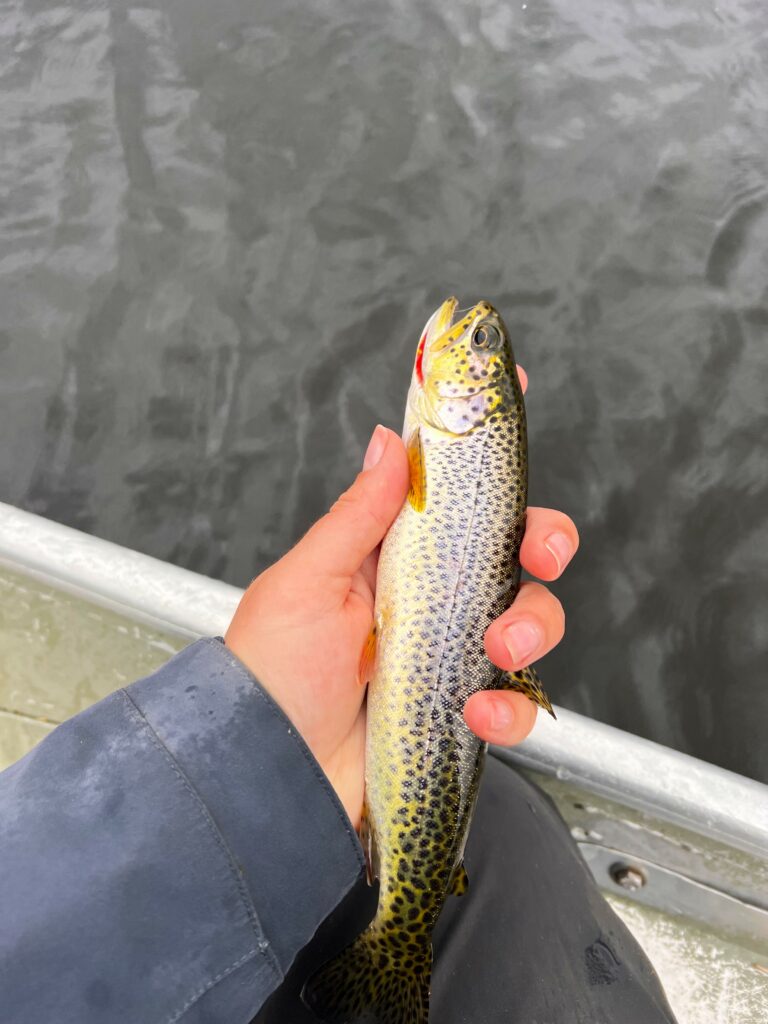
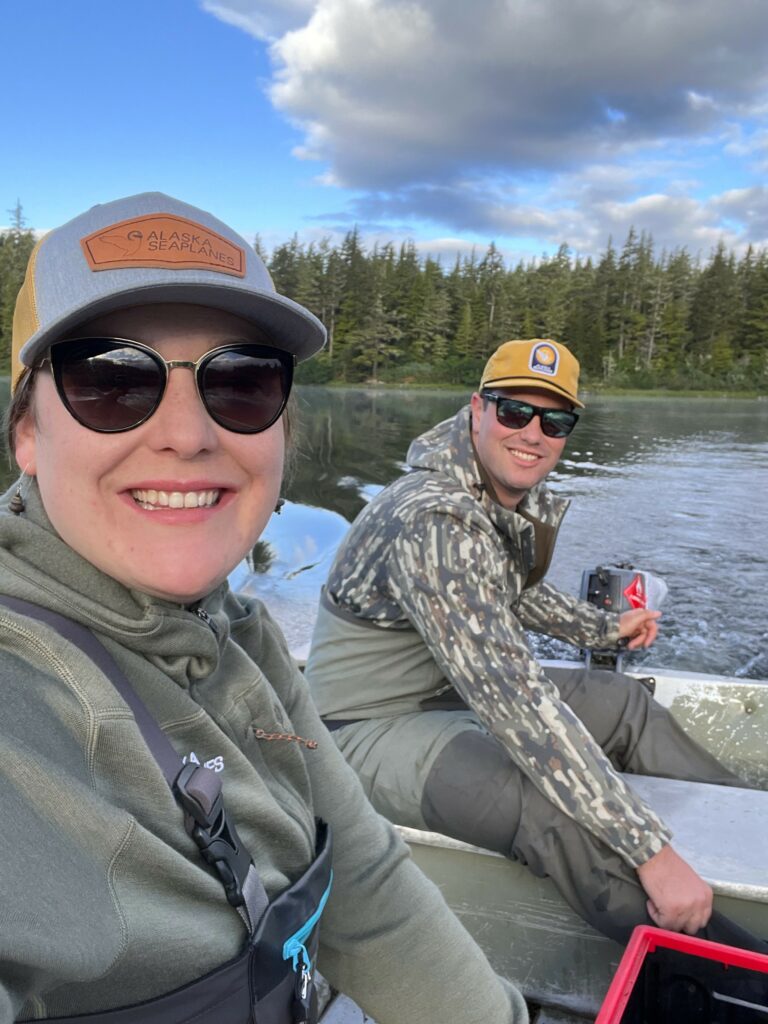
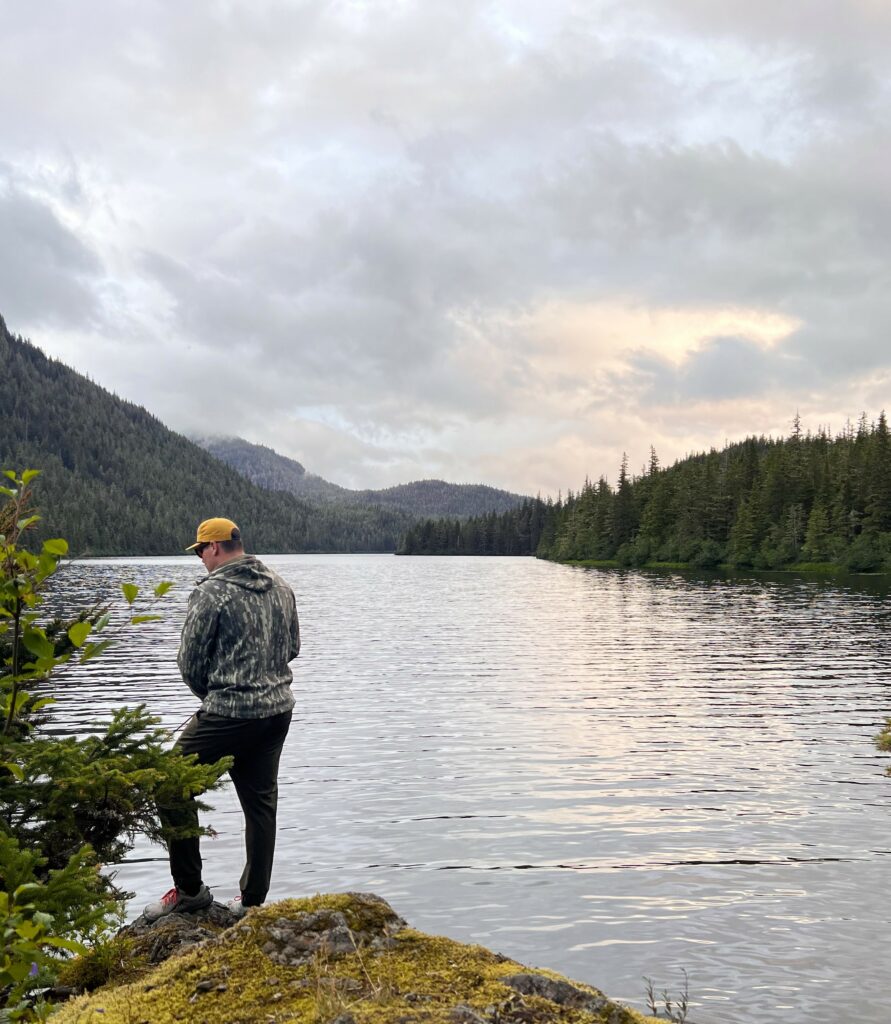

Day 5:
Waking up on our final day and knowing that we will be saying goodbye to this lake, and the good times we have had is bittersweet. Although I long for a hot shower, these quiet days where our only goals were to catch a few fish and enjoy the area around us will dearly be missed. Reading the logbook and seeing all the familiar names and adventures that have been had, warms my heart. So many memories have been conjured at this little cabin, nestled away on a bluff in the woods.
Along this journey, we had all types of weather imaginable, fantastic meals by the fire, rummy by candlelight, countless laughs, and over 100 cutthroat trout caught and released. As we pack our gear, we leave our fly rods strung until the last possible moment, hoping we will have a bit of time to take the boat on the lake for one last rally.
Scooting across the lake with blue skies above, we catch sight of a family of loons, calling to one another while cruising the lake themselves. Watching the beaches, we spot a family of Sitka Blacktail Deer, shuffling along the shorelines under bushes and trees. Finally, we spot a family of river otters swirling around each other and playing, likely applauding themselves for their catch of the day.
Before our pilot lands to take us back to Juneau, we catch about a dozen more fish, smiling ear to ear, appreciating the wild, the quiet, the magic that Jim’s Lake has provided.
There’s no doubt about it: Jim’s Lake is a fly fishers paradise. Once you make the journey to the lake, it is easy to access fishing everywhere. From casting off the bluff the cabin sits on, to wading the beaches and casting from shore. An angler can hike downstream or take the john boat out with paddles or a small outboard to access the rest of the waters. From streamers to dries and even big meaty mouse fly patterns, the array of accessibility is endless.
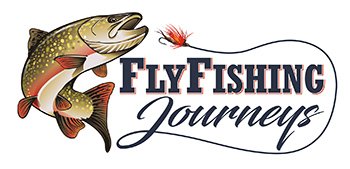

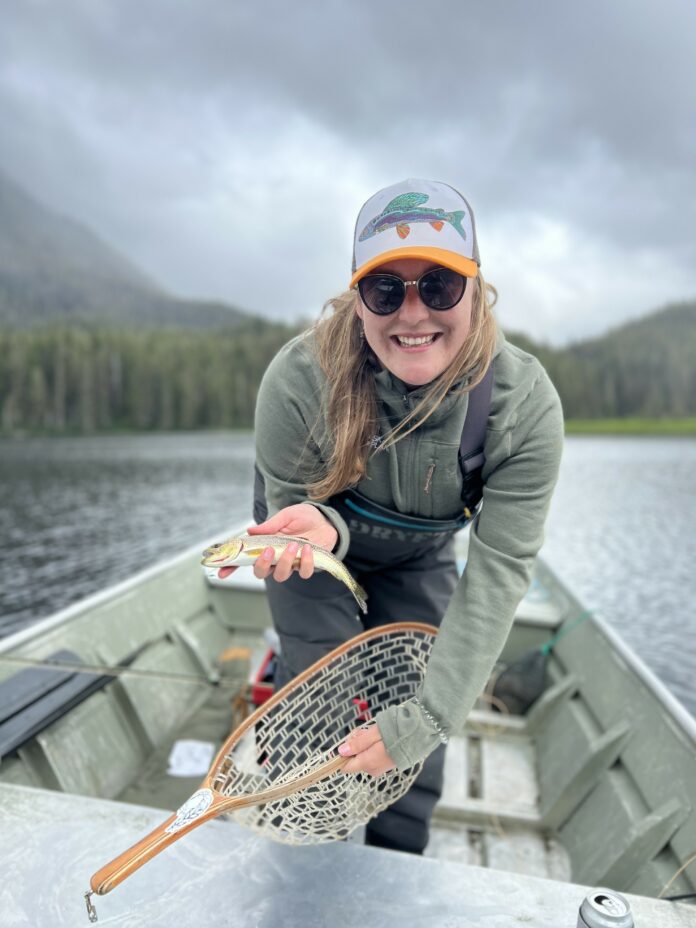



I really enjoyed this story, and am headed to Jim’s lake next week. I am located in Juneau and have fished several lakes in this area and on Baronof and Chichagof, but this will be my first trip to the Kootznoowoo Wilderness. I would very much like to make contact with the author to ask a few questions about her trip, cabin amenities, and flies to tie. I have included my e-mail in the e-mail field below.
Cheers,
Hey, Scott! Feel free to email me, Kayla Fleetwood, at Kayla@flyfishingjourneys.com. I attempted to send you an email and it was undeliverable.
I hope you enjoy your trip to Jim’s Lake, and am more than happy to give you tips and tricks!
-Kayla